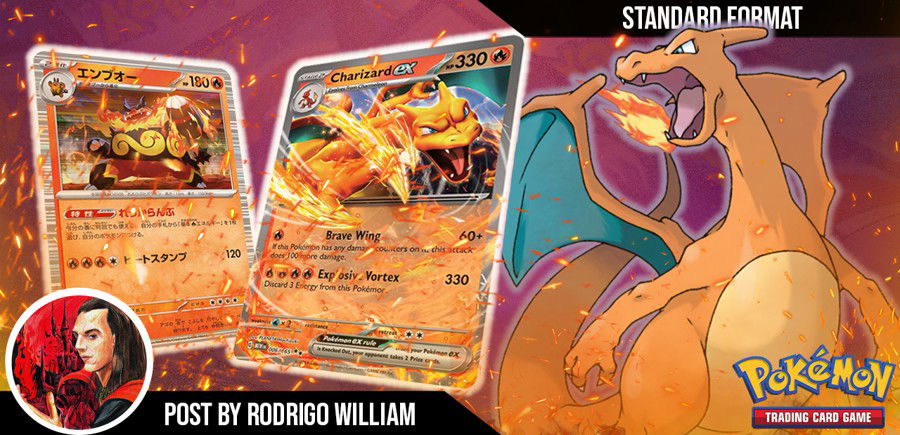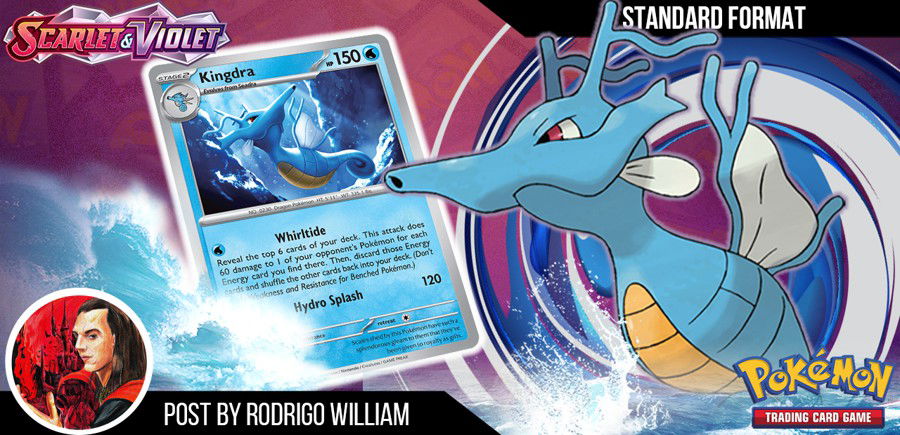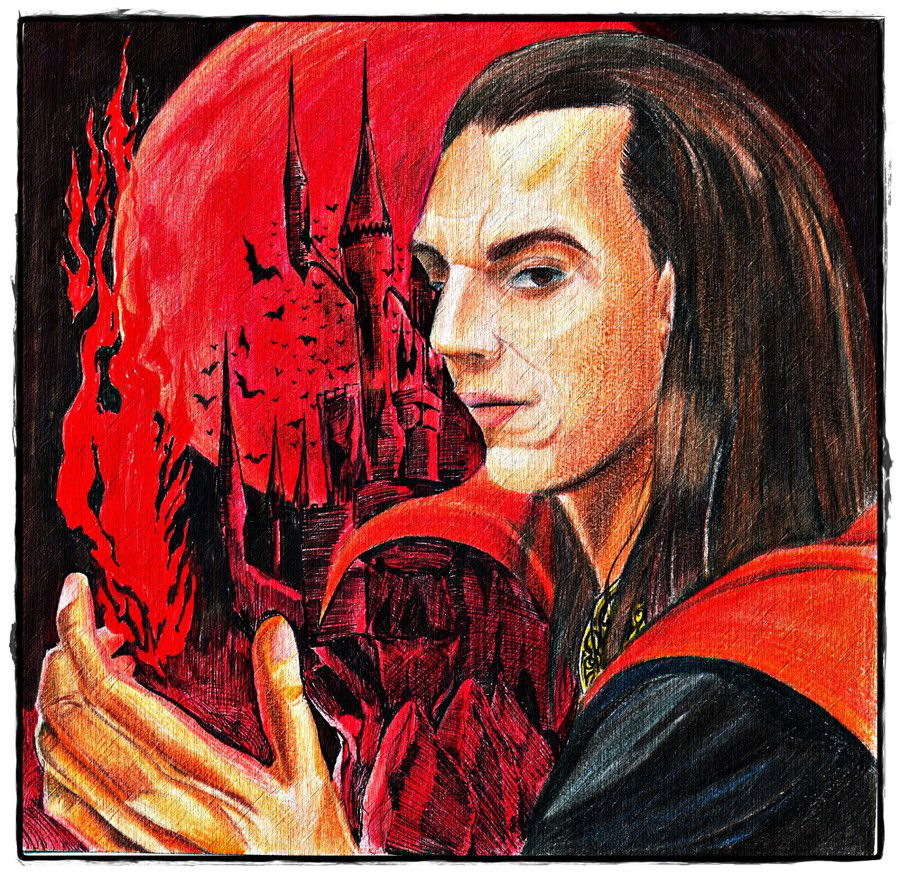Introduction
In this article, we'll discuss the Gym Leader Challenge (GLC) format, more specifically what makes a deck strong in this format. We'll go through a few critical deckbuilding concepts we developed after years of playing Pokémon TCG. Then, we'll show you exactly how they work in practice by using a Gengar ''Instant K.O.'' Psychic Box list as an example.
Let's go!
What is the Gym Leader Challenge (GLC) Format?
Basically, in the GLC format, you can only use cards without a "Rule Box" and in a specific archetype, that is, you can't use different types of Pokémon in a single deck.
You can use cards from the Black & White set to the most recent sets, but you can only use 1 copy of them in the deck, including your Pokémon's evolution line and Trainers.
You can learn more about this format with this article, which goes over the rules, the banlist, and a few deck suggestions.
In today's article, however, we'll go over what makes a deck strong in the GLC format and how you can take advantage of the rules to build efficient archetypes. We'll also show you a practical example - a real list I use in this format - so you can see all of this in action.
6 Basic Concepts for GLC
The 6 concepts below aren't part of the official GLC ruleset - they are just my personal observations after years of playing. I often mention them when I discuss the main concepts of the format with friends, LGS owners, and other players.
Most decks in the format try to take advantage of these concepts in one way or another:
1) Archetypes centered around strong attacks that only cost a few energies or no energies at all typically have an advantage over the others.
2) Archetypes centered around (mostly) basic attackers or evolution Pokémon that are practical to set up typically have an advantage over the others.
3) Archetypes centered around sniper or spread attackers typically have an advantage over the others.
4) Archetypes that retreat Pokémon efficiently, and play Pokémon with just a few weaknesses and resistances, typically perform better.
5) Archetypes centered around recursive support Pokémon - card draw Pokémon, Pokémon with special abilities or other effects - typically have an advantage over the others.
6) Archetypes that play specific, niche Trainers and Special Energies typically perform better.
The 1st Concept
"Archetypes centered around strong attacks that only cost a few energies or no energies at all typically have an advantage over the others."Let's see how this works in practice with Zapdos TEU 40 and Moltres BRS 21.

After you attack with Zapdos TEU 40, you may struggle to retreat it, which isn't ideal, considering it deals extra damage if you promote it from your bench first. In any case, you can play cards like Float Stone BKT 137 and Air Balloon SSH 156 to move it around a bit more easily. You can also add a few very efficient cards to draw Float Stone and Air Balloon, like Arven sv3 186, Adventure Bag LOT 167, or Guzma & Hala CEC 193, as well as many others.
As for Moltres BRS 21, to deal more damage, it needs to have one damage counter attached, which isn't ideal either. Nonetheless, you don't need many energies to use its attack, so it's still very efficient.
Now, here's a common question: "Oh, but if I want to play around this Pokémon, all I need to do is not attack it, so it's easy to deal with."
In practice, you'll find that letting a Pokémon deal 10 damage per turn to you without trying to stop it is not the best idea. Eventually, you'll have to do something.
Furthermore, you can set up Moltres BRS 21 on your bench and take advantage of, for instance, Magma Basin BRS 144 to attach a damage counter to it before you attack with it.
These Pokémon don't need a lot of energies to attack, but still deal a lot of damage, so they fit our first basic concept.
The 2nd Concept
"Archetypes centered around (mostly) basic attackers or evolution Pokémon that are practical to set up typically have an advantage over the others."As you could see above, basic Pokémon are very valuable because they enter play faster and offer you immediate answers. Meanwhile, evolution Pokémon are only worth it if you can easily attach energies to them. Here are a few valuable evolution Pokémon:

Jumpluff EVS 4 can attack twice on the same turn. If its first attack (which deals 60 damage) Knocks Out the enemy Pokémon, then they'll have to put another Pokémon on the active spot, and this Pokémon will take the second attack.
It is a simple, easy-to-set-up Pokémon that only needs one Grass energy.
Its previous evolution, Skiploom EVS 3, is even easier to use because, when you attach an energy from your hand to it, you can get the next evolution straight from your deck.
Another similar example is the Butterfree line:

The main strategy centers around evolving Caterpie FLF 1 on turn 1, getting Butterfree sv3pt5 12 as fast as you can, and then using its attack, Bye-Bye Flight. Then, you'll be able to loop Butterfree*'s control attacks to disrupt your opponent whenever they make a move.
The 3rd Concept
"Archetypes centered around sniper or spread attackers typically have an advantage over the others."Personally, I believe this is one of the most important concepts for this format because, if you understand it and use it well, you'll win matches all at once by Knocking Out multiple Pokémon in a row.
So, no one was surprised when the Pokémon Company banned Kyogre SHF 21, from Sword & Shield: Shining Fates, on November 11th, 2022. Its sniper attack was just too powerful for this format because it didn't force you to mill cards from the top of your deck or discard any energies attached to it to use it. It was simply broken.
This type of attack also makes sense for our "5th concept" because recursive Pokémon can protect your bench against sniper or spread damage.
The most relevant example from Scarlet & Violet is Rabsca TEF 24, which protects your Pokémon in two different ways all by itself. You'll mostly find this type of effect in Grass archetypes. Many other archetypes can't access it, and some can't even play similar defensive Pokémon.
In the Water archetype, Manaphy BRS 41 protects your Pokémon from sniper damage, but it doesn't protect them from spread damage. The Psychic archetype can play Mew UNB 76 and Mr. Mime PLF 47, which also only protect you from sniper damage. The Fighting archetype can play Machoke GRI 64 and the Metal archetype can play Jirachi sv4 126, but these cards only protect your Pokémon from basic enemy Pokémon.
Several archetypes, like the Darkness and Dragon archetypes, can't protect their bench with efficient tools, so you need to be wise when you pick a strategy to play. You need to pick one that can take advantage of these effects.
Finally, the Water and Psychic archetypes have many ways to protect themselves, while others, like the Darkness and Fire archetypes, have less options. You'll have to study the cards available carefully to find viable alternatives.
The 4th Concept
" Archetypes that retreat Pokémon efficiently, and play Pokémon with just a few weaknesses and resistances, typically perform better."Playing Pokémon you can retreat for just a few energies makes a huge difference: you'll discard less energies when you retreat them, and, as a result, won't need to play too many cards to recycle resources later. Keep in mind that, in the GLC format, you can only play one copy of each Item to recycle cards.
"But we can play Super Rod sv2 188, Ordinary Rod SSH 171, Energy Recycler BST 124, and Energy Retrieval sv1 171, they're enough, right?"
In practice, you'll run out of these resources or your opponent will prevent you from using them with Budew PRE 4 + Luxurious Cape sv4 166, which can disable your entire strategy.
You'll soon realize that retreating Electric, Water, and Grass Pokémon is easy, whereas retreating Fighting Pokémon (particularly Ground and Rock) and Metal Pokémon is harder. All you need to do is take a look at a few decklists.
Weaknesses
Some archetypes are weak against multiple other archetypes: Water is often vulnerable to Electric, Grass, and Metal Pokémon (because of Ice Pokémon). Psychic is weak to itself and Darkness Pokémon, and Darkness Pokémon are weak to Fighting and Grass Pokémon (because of Insect Pokémon).
Then there are classic weaknesses, like Fire against Water Pokémon and Grass against Fire Pokémon. Dragon Pokémon are an exception: ever since Sword & Shield, they no longer have weaknesses and don't struggle as much.
Resistance
Resistances are always welcome, as they make your Pokémon more resilient to attacks that would usually Knock them Out. They essentially buy you extra time to react.
The 5th Concept
"Archetypes centered around recursive support Pokémon - card draw Pokémon, Pokémon with special abilities or other effects - typically have an advantage over the others."When you pick an archetype to play, you'll always be able to find one that has everything a great deck needs: card draw, something to protect your benched Pokémon from "sniper" and "spread" attacks, something to attach energies to your Pokémon (either from your deck or your discard pile), and "pull" effects.
Some stand out more, such as the Electric archetype. There are many recursive Electric Pokémon, and they each play a different role:
1) To attach energies, you can play Magnezone FLI 36, as it lets you attach them from your hand to your Pokémon.
2) Magneton SSP 59 lets you attach energies from your discard pile to your Pokémon, but it self-destructs after that, so it paves the way for combos with cards like Counter Catcher sv4 160.
3) If you need card draw, Electrode PLF 33 is your best bet.
Each archetype features a signature move. The Water archetype nearly always plays Pokémon with a "Rain Dance" ability, such as Blastoise BCR 31 and Baxcalibur sv2 60, to attach energies.
Other examples are:
- Fighting: Infernape TWM 33 lets you attach Fire and Fighting energies from your hand to your Pokémon. Coalossal RCL 107 does the same, but it gets energies from your discard pile.
- Psychic: Xatu sv4 72 and Malamar FLI 51 let you attach energies to benched Pokémon, one from your hand and one from the discard pile.
To sum up: the best strategy is finding an archetype that plays as many of these recursive options possible.
The 6th Concept
"Archetypes that play specific, niche Trainers and Special Energies typically perform better."Our last concept centers around finding support cards, usually Trainers or Special Energies, that match your archetype.
Many Pokémon types play specific options: Water Pokémon play Dive Ball PRC 125 to draw Pokémon, Grass Pokémon use Net Ball LOT 187, and Psychic Pokémon play Fog Crystal CRE 140 to draw basic cards.
The Fire archetype has many options:
1) They can play Supporters to attach energies, like Welder UNB 189, Blacksmith FLF 88, and Mela sv4 167.
2) Or stadiums like Giant Hearth UNM 197, Scorched Earth FCO 110, Magma Basin BRS 144, and Altar of the Sunne GRI 118.
3) Or Items like Fire Crystal UNB 173, Fiery Flint DRM 60, Fiery Torch FLF 89, and others.
4) Or Special Energies, like Burning Energy BKT 151 and Heat Fire Energy DAA 174.
This means the key is picking an archetype that can also use these tech cards to support the entire strategy.
A Practical Example
Now that we understand all 6 concepts, we know everything we need to know to build a great deck. All players should understand these concepts when they pick a strategy so they can get one that fits all the criteria above.
A common thing players who migrate to Gym Leader Challenge (GLC) while trying to escape the Expanded format say is that "broken decks exist because we don't have answers for them". GLC also has this issue (though it's a bit less severe because you can only play "baby" cards in it).
Those who know this format can tell: despite their differences, GLC is quite similar to Expanded in essence. The deck we'll explore below is a great example of that.
It is called "Gengar K.O." and applies many of the "concepts" we mentioned above, in particular 1, 3, 4, 5, and 6.
That being said, let's see it!
The Psychic/Ghost Archetype: "Instant K.O." Gengar
The List
This deck centers around "spread" damage, that is, putting damage counters on several enemy Pokémon.
Based on the concepts above, the Grass archetype is often well-protected against this mechanic because of Rabsca TEF 24's ability.
Pokémon like Manaphy BRS 41 in the Water archetype only protect Pokémon against "sniper" damage, not "spread" damage. That's the difference.
Archetypes that can't defend their bench are vulnerable to it - and that's why our 3rd concept (that is, that archetypes centered around spread or sniper damage typically have an advantage over the others) makes sense, as well as our 1st, 2nd, and 4th concept.
By combining Ghost and Psychic Pokémon, this deck is vulnerable to Darkness and Psychic archetypes, but many of our Pokémon are resistant to Fighting Pokémon. You'll also not need many energies to retreat most of them (apart from Malamar FLI 51).
"Archetypes centered around recursive support Pokémon - card draw Pokémon, Pokémon with special abilities or other effects - typically have an advantage over the others."

This deck plays Malamar FLI 51 and Xatu sv4 72 to attach energies. One gets energies from your discard pile and the other gets an energy from your hand, and draws cards at the same time.
"Archetypes that play specific, niche Trainers and Special Energies typically perform better."
This list also plays support cards like Old Cemetery CRE 147 and Dimension Valley PHF 93. The first lets you put damage counters on Pokémon whenever any player attaches energies to non-Psychic Pokémon, and the second lets you use Psychic attacks for one colorless energy less.

This "spread" damage strategy will be even stronger with Spell Tag LOT 190 and Vengeful Punch sv3 197. Spell Tag works exclusively with Psychic Pokémon, and the second is more generic.

As for special energies, you can use Horror Psychic Energy RCL 172, created originally for Psychic Pokémon, and Spiky Energy JTG 159, the most recent support card from Scarlet & Violet: Journey Together.

The Pokémon
Your main goal is to put damage counters on enemy Pokémon.
Uxie SSP 78 puts 2 damage counters on all enemy Pokémon. It replaced Weezing UNB 74 and, as such, you won't have to dedicate more space for an entire evolution line or worry about banned cards, like Double Colorless Energy GRI 166 and Twin Energy RCL 209.
The more counters you put on enemy Pokémon, the easier it will be to use Gengar BKT 60's main attack: it "instantly K.O.s" any Pokémon with 3 or more damage counters.
Here are a few cards that stand out in this strategy:

► Blacephalon CEC 104 puts 4 damage counters on enemy Pokémon, or up to 12 damage counters if you have exactly 3 Prize cards remaining.
► Wobbuffet PHF 36 disables all Pokémon abilities except for Psychic Pokémon abilities, and its attack deals more damage according to each damage counter on your opponent's Active Pokémon.
► Azelf SSP 80 also deals more damage according to each damage counter on enemy Pokémon.
► Mimikyu LOR 80 is an alternative to Azelf SSP 80.
We'll also use Munkidori PRE 44's ability, Adrena-Brain: if it has a Darkness energy attached, you may move 3 damage counters from your own Pokémon to enemy Pokémon. With it, using Gengar BKT 60's Creep Show ability will be easier.
Trainers
Supporters

► Guzma & Hala CEC 193 is vital, as it lets you get a Stadium, Tool, and Special Energy from your deck - like Old Cemetery CRE 147, Horror Psychic Energy RCL 172, and Spell Tag LOT 190.
► Carmine PRE 103 is better than Professor's Research because you can play it on turn 1, and it is quite useful afterward too.
► Raihan EVS 152 lets you attach energies from your discard pile and also lets you get any card from your deck.
► Colress PLS 118 draws cards, and, if your bench is full of Natu and Inkay, it'll draw even more cards.
► Arven sv1 166 draws essential Items and Tools from your deck, like Spell Tag LOT 190 and Vengeful Punch sv3 197.
► Iono sv2 185 shuffles your and your opponent's hand. You should use it when you need to turn the game to your favor.
► Roseanne's Backup BRS 148 shuffles a Stadium, Special Energy, Tool, and Pokémon back into your deck.
► Lusamine CIN 96 recycles used Stadiums from your discard pile.
► Tulip sv4 181 gets up to 4 cards - Psychic energies or Psychic Pokémon - from your discard pile and adds them to your hand. It is a perfect example of how important our 6th concept is.
Items to Get Pokémon

Fog Crystal CRE 140 and Mysterious Treasure FLI 113 are essential. With them, you'll draw Psychic Pokémon.
Card Draw Items

Items to Filter Resources

Items to Recycle Cards

Tools

► Vengeful Punch sv3 197: if your opponent Knocks Out the Pokémon this Tool is attached to, you may put 4 damage counters on their Active Pokémon.
► Spell Tag LOT 190 lets you put 4 damage counters on enemy Pokémon when your opponent Knocks Out the Pokémon it is attached to.
► Counter Gain SSP 169 lets you attack with the Pokémon it is attached to for one colorless energy less. It is quite useful when you're behind and need Dimension Valley PHF 93.
Stadiums

Special Energies

Cons
Decks that force you to discard Special Energies, like Enhanced Hammer TWM 148 or Giacomo sv2 182, will be an issue, as well as decks that remove Stadiums and Tools, like Field Blower GRI 125 and Startling Megaphone FLF 97.
This list will also struggle against decks that focus on putting cards in the Lost Zone, like Faba LOT 173 and Lost Vacuum CRZ 135.
Decks that block "spread" damage, like Grass lists, will also be a problem.
Card Suggestions
Scarlet & Violet: Shrouded Fable brought us a few options, like Dusclops and Dusknoir:

These cards also enable new strategies, like Counter Catcher sv4 160 and even Roxanne ASR 150, particularly when your opponent has 3 Prize cards remaining or less.
Another underrated example is Cofagrigus SSP 83, from Scarlet & Violet: Surging Sparks.
Final Words
As we've shown above, picking the right archetype can really be the difference between winning or losing. If you want to win, you need to dedicate some time and study the cards, from the Black & White set until the most recent sets.
The Pokémon TCG community often uses the GLC format to criticize the Expanded format. Many say "it's impossible to answer some decks in Expanded", but, considering the spread deck above, you can see very few can handle this strategy in GLC either because not all archetypes play the right resources to beat it. So, GLC actually does have the same issue as the Expanded format.
In Expanded, where you can play multiple copies of the same card and combine different types of Pokémon, there are endless combos you can play, so each match is unpredictable. In GLC, however, you're restricted to a single archetype. If you end up facing an opponent that can deal with your Pokémon type, for instance, there's very little you can do.
For instance, if you end up playing Fire Pokémon against Water Pokémon, or if you need to play Special Energies but your opponent can block damage dealt by Pokémon that use them... These scenarios can "check-mate" you.
According to Limitless, the second-most popular archetype in this format is the Psychic archetype, so picking the right archetype is often why you'll win or lose matches.

What do you think of this format? Tell us your thoughts in our comment section below.
Thank you, and see you next time!













— Comments 0
, Reactions 1
Be the first to comment